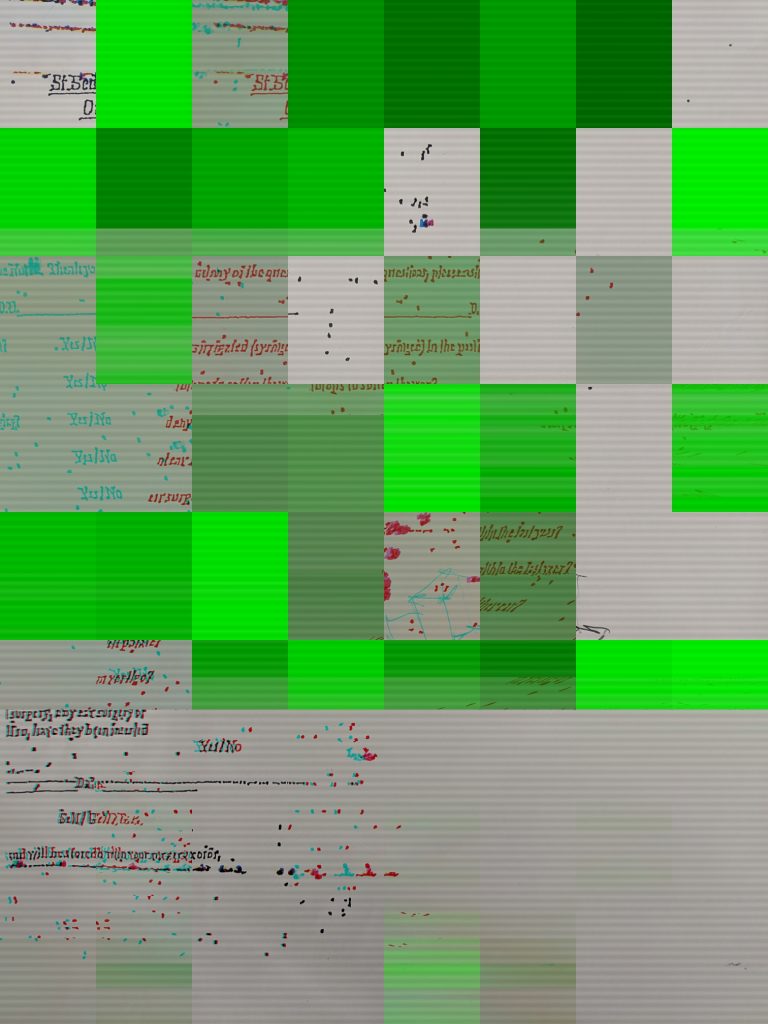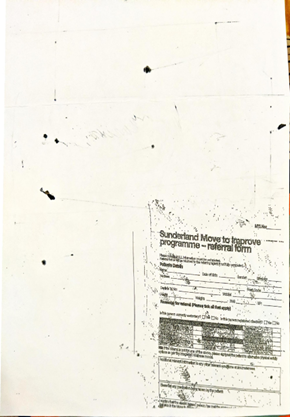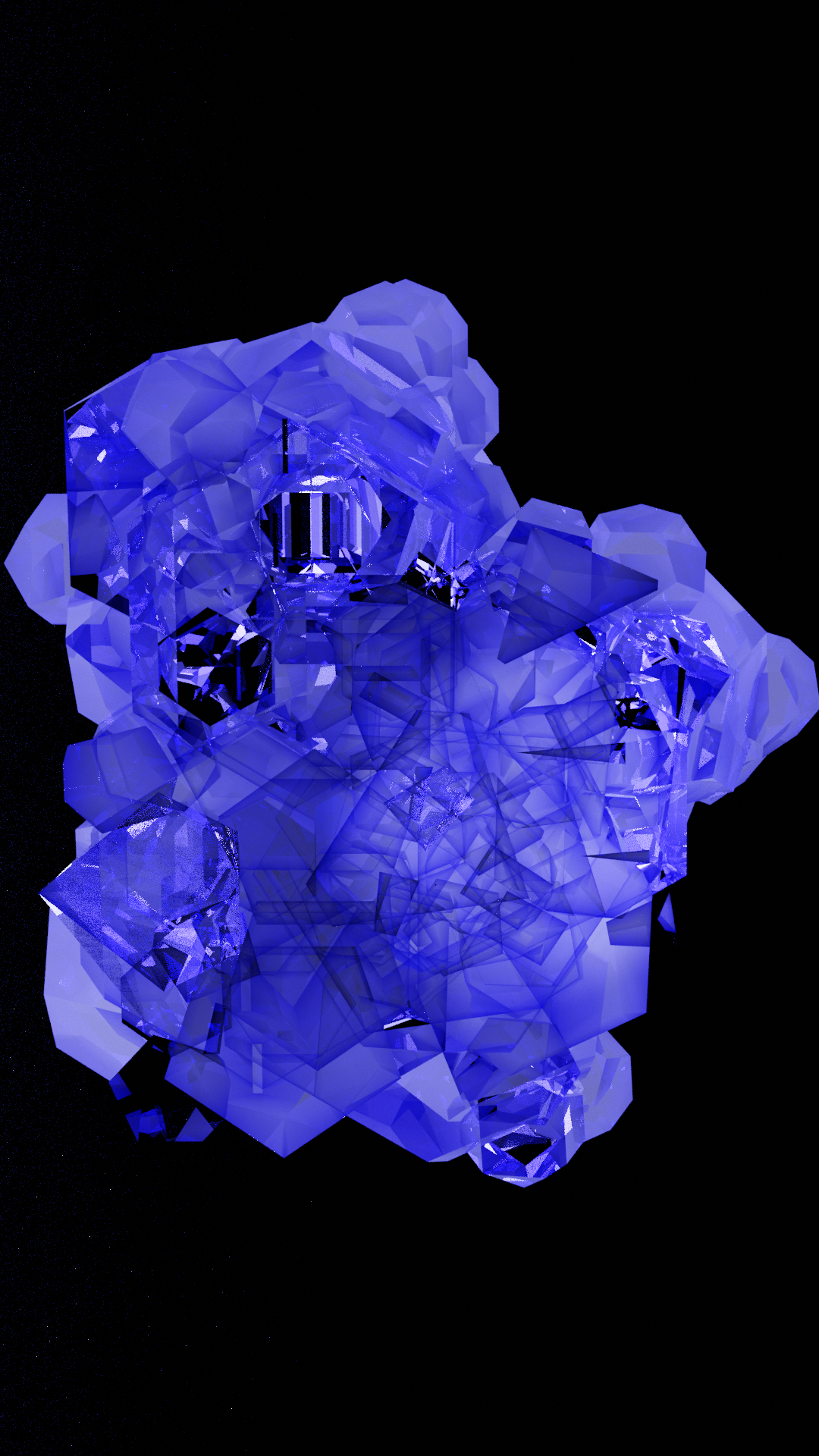Roger Hiorns
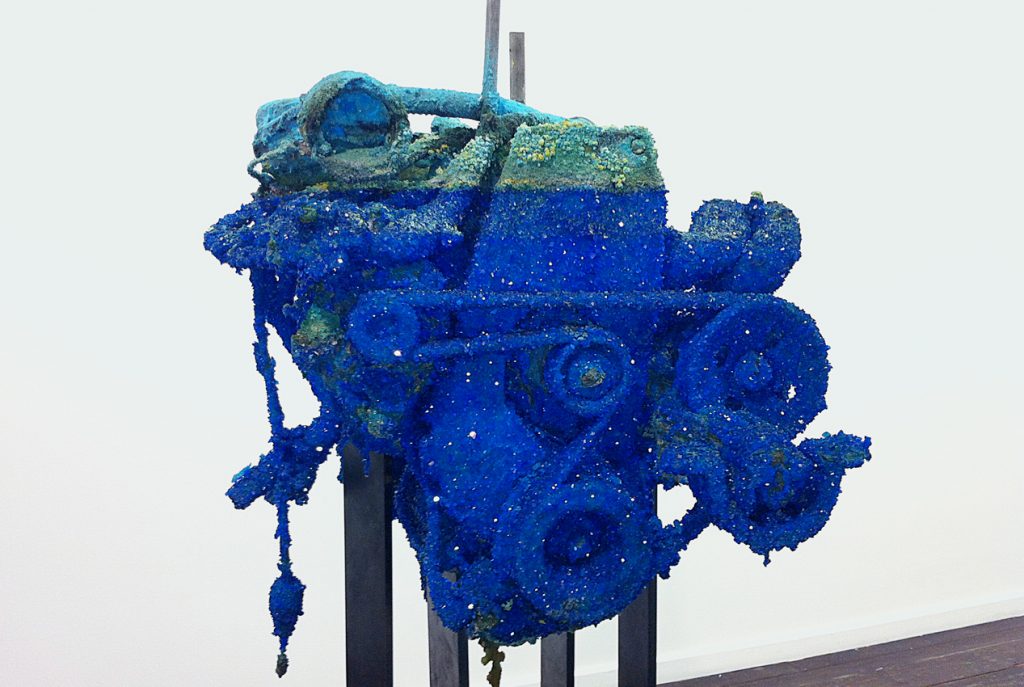
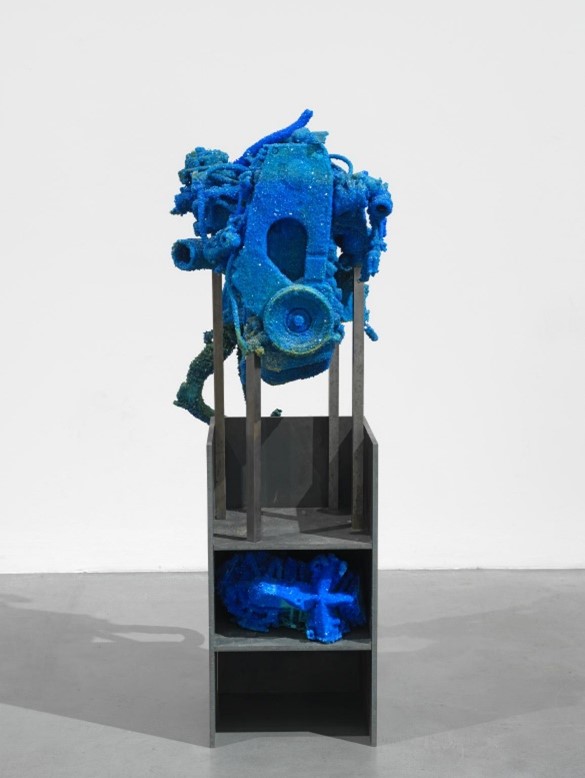
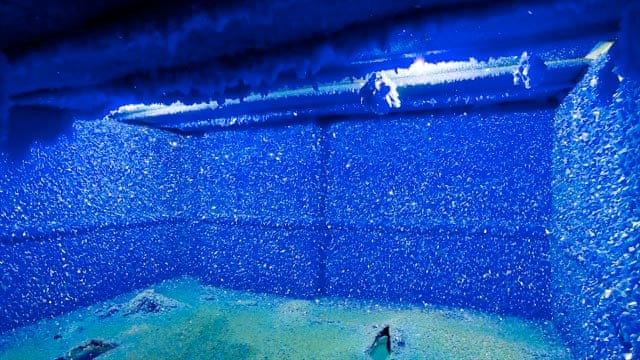
Blender Crystal Experimentation
Developing Crystal Texture/Material
To begin with, I used the standard Principled BSDF and chose a light blue colour to give the crystal some sort of base from which I could develop the material:
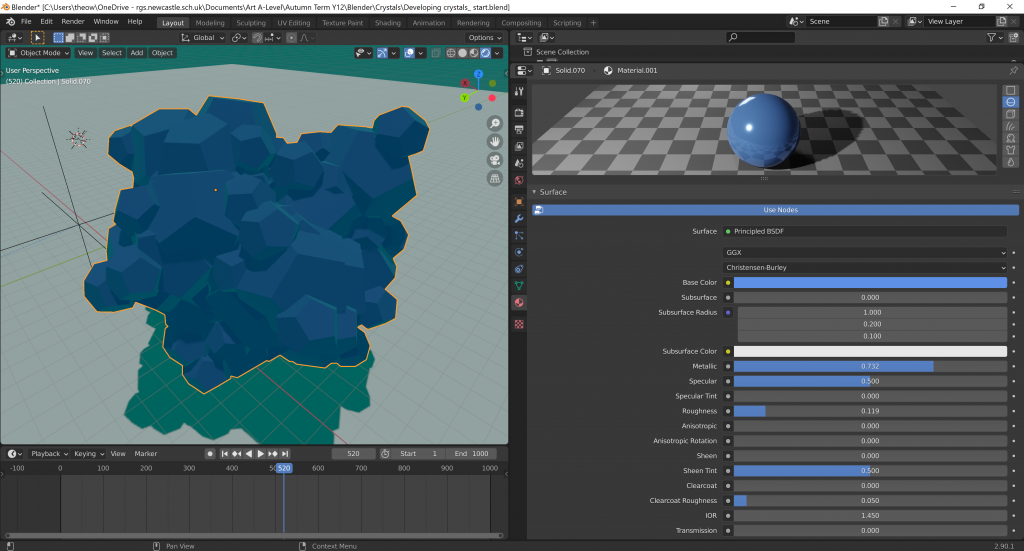
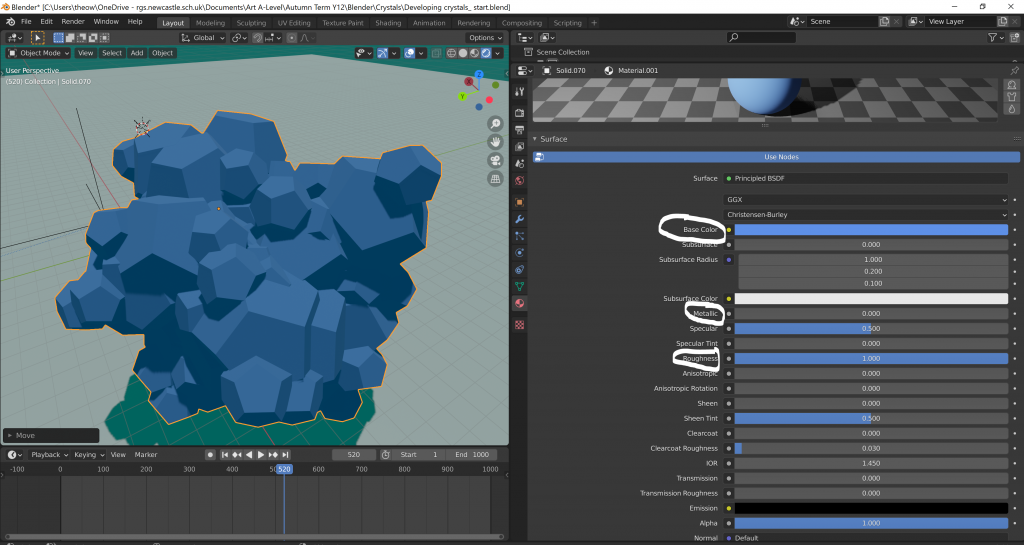
- By changing the “roughness” setting, the crystal will reflect more/less light and become more/less matte in appearance.
- “Metallic” is similar, but makes the surface have more of a reflective, metallic effect.
These were the predominant settings I fiddled with initially. However, it wasn’t achieving the translucent, diffracting effect of an actual copper crystal. So, with the help of a few forums and YouTube videos shown below, I used “nodes” instead of the standard drop down menu to try and get the desired material…
https://blender.stackexchange.com/questions/14465/how-to-make-a-crystal-material
https://docs.blender.org/manual/en/latest/render/shader_nodes/shader/glass.html
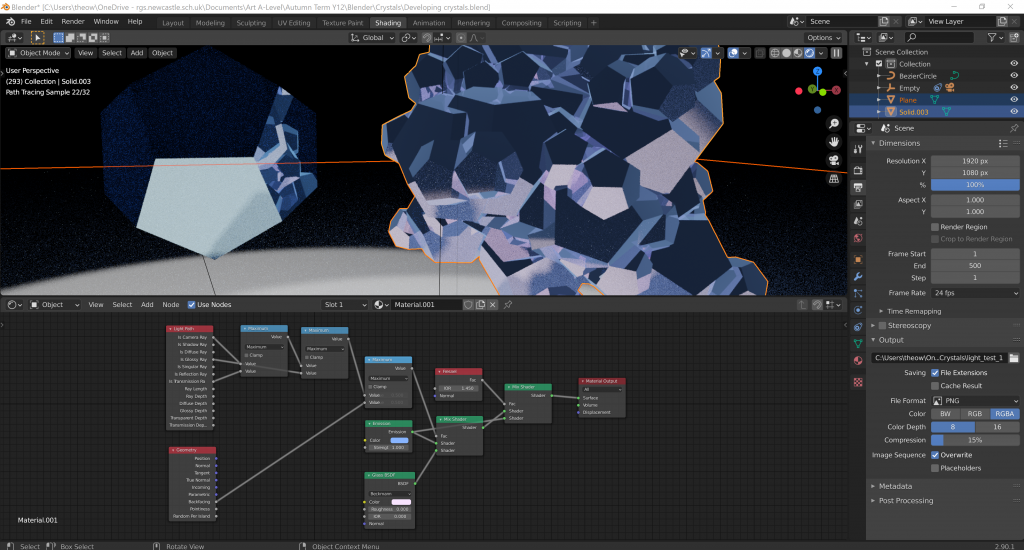
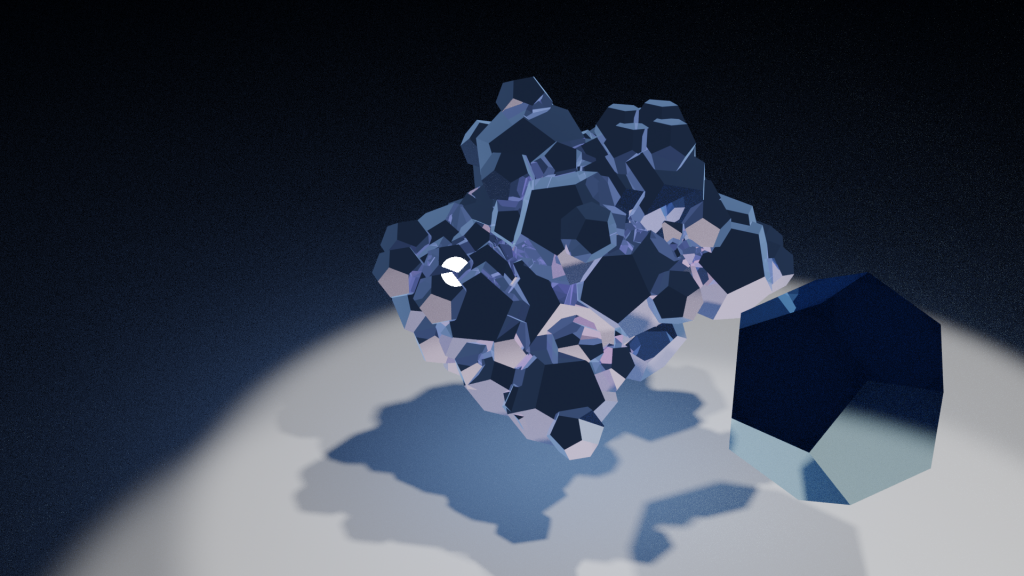
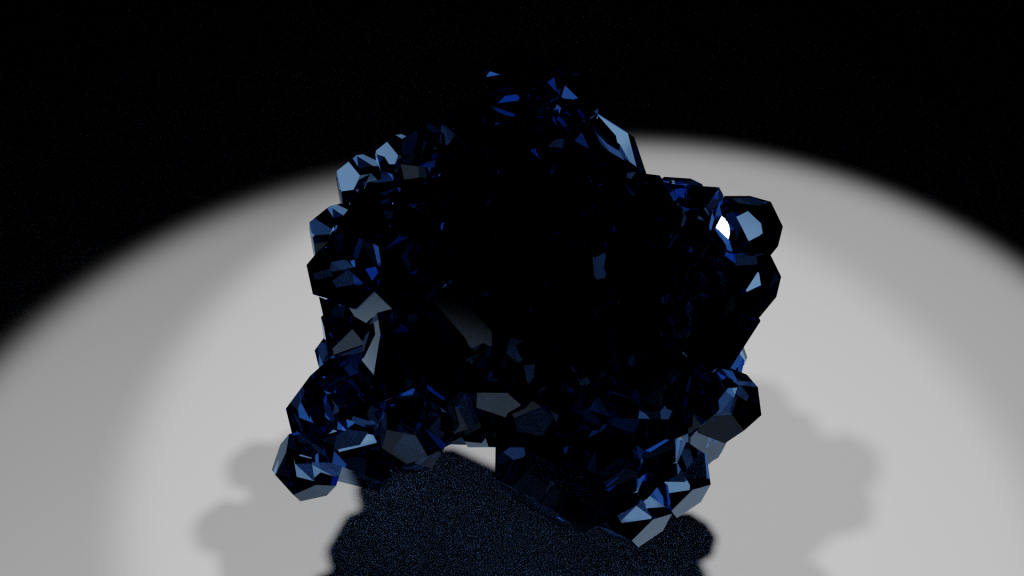
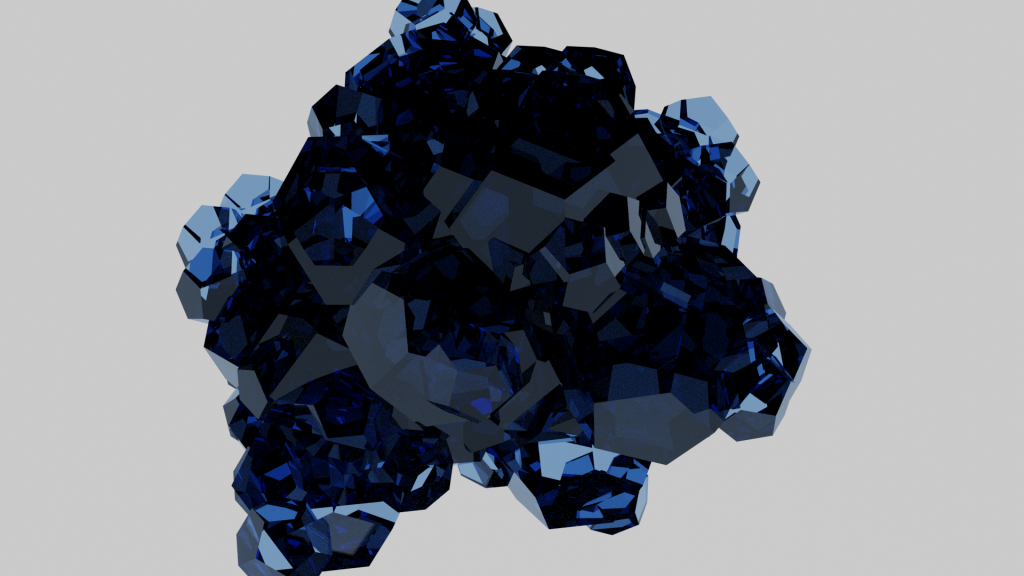
This image is my favourite, as it balances subsurface scatter, diffraction, opacity and glassy-effect to create a convincing crystal material;
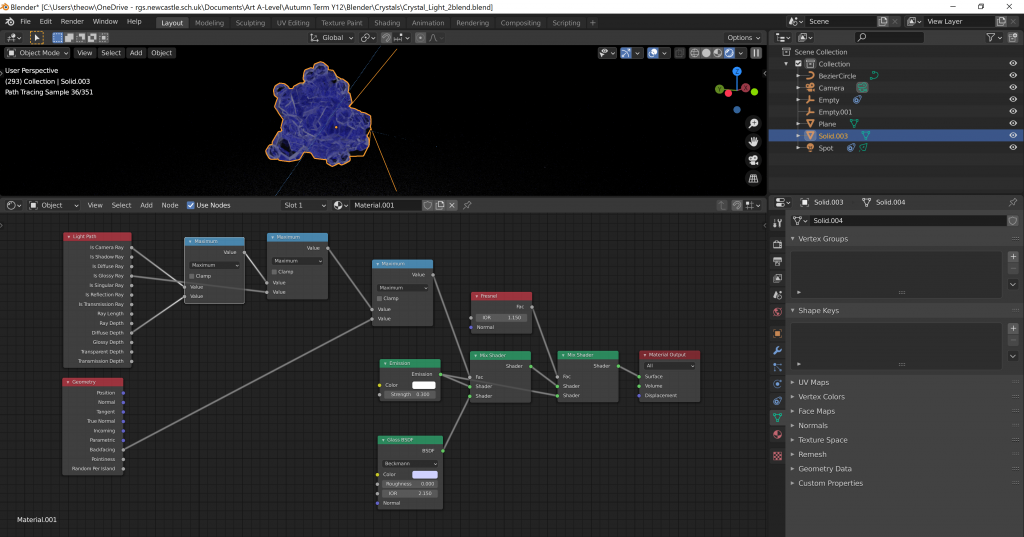
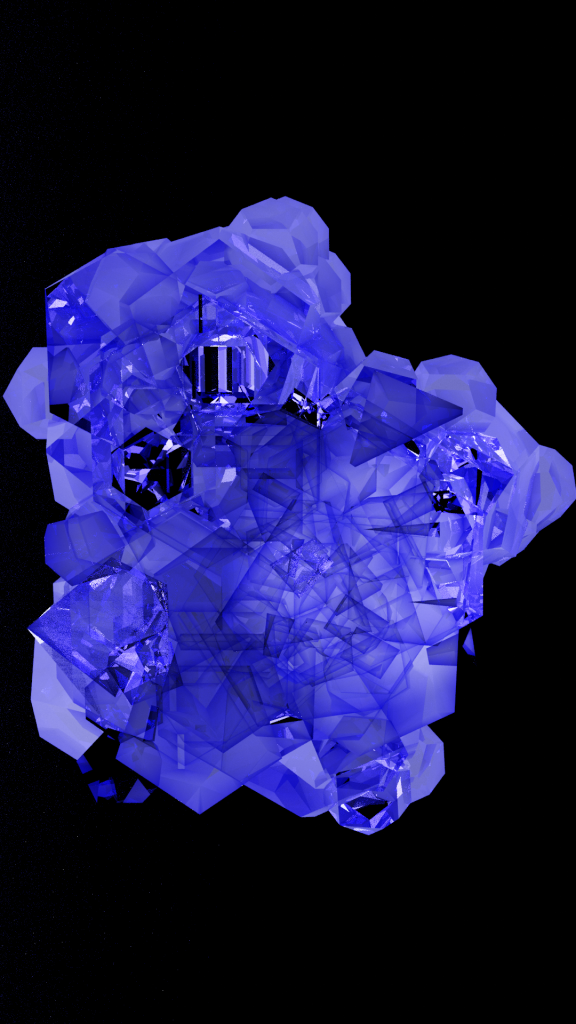
Glitched Growth: Wade Guyton


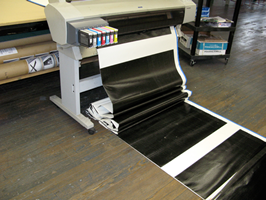
Crystals, like anything in the natural world, aren’t perfectly reproducible and so their growth is not consistent. If I were to think of this from a digital perspective, I would say the growth is “glitched”. Guyon’s plays with glitching in his prints from him, above. However, in my previous art projects, I did something similar, where—through photocopying—I glitched medical forms to the point where the text dematerialised. Here, Guyon is again glitching through printing i.e. during the process itself without losing the quality of the image, simply realigning or transforming it. In response, I will create videos of the crystals growing but in a glitched way.
